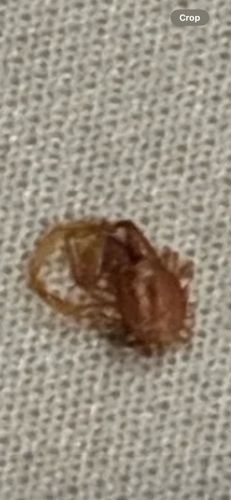Bed Bug
Scientific Name: Cimex lectularius
Order & Family: Hemiptera (Order); Cimicidae (Family)
Size: Adults are typically 4-5 mm (about 3/16 inch) in length.

Natural Habitat
Bed bugs are typically found in human dwellings. They hide in mattresses, box springs, bed frames, headboards, cracks in walls, furniture, and behind wallpaper. They can also infest luggage, clothing, and other personal items.
Diet & Feeding
Exclusively feed on blood, primarily human blood, but also blood from other mammals and birds.
Behavior Patterns
Bed bugs are primarily nocturnal, feeding on humans (or other warm-blooded animals) while they sleep. They are attracted to warmth, carbon dioxide, and certain chemicals. They hide in cracks and crevices during the day, emerging to feed at night. Females lay several hundred eggs over their lifetime.
Risks & Benefits
Risks: Bed bug bites can cause itchy welts, skin irritation, and allergic reactions in some individuals. While they are not known to transmit diseases, severe infestations can lead to sleep deprivation, stress, anxiety, and secondary skin infections from scratching. Benefits: None known to humans or the ecosystem.
Identified on: 9/1/2025